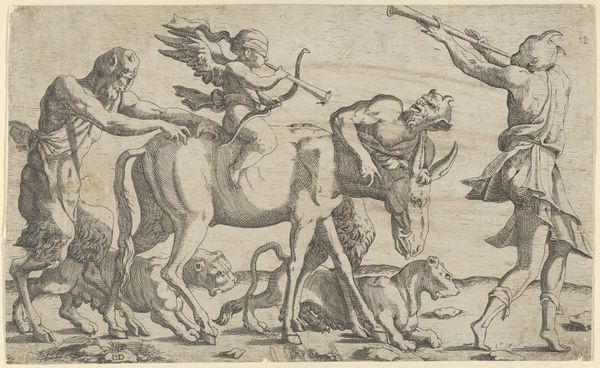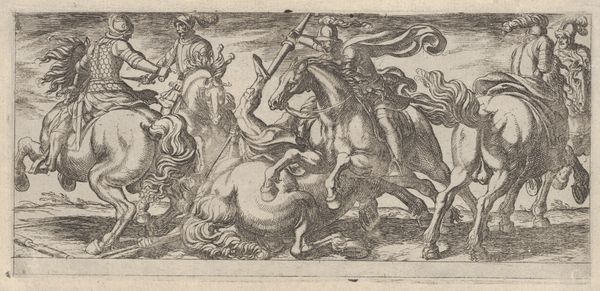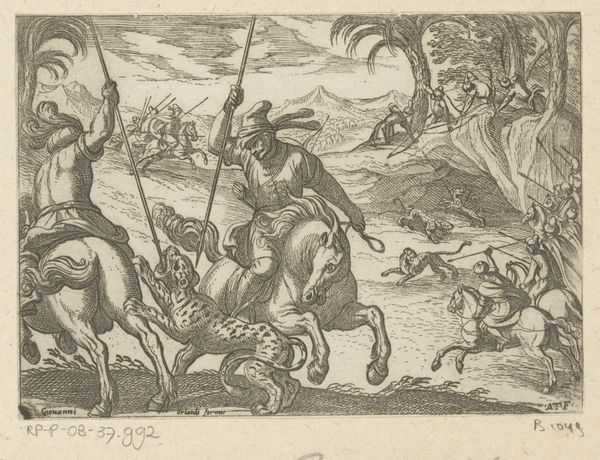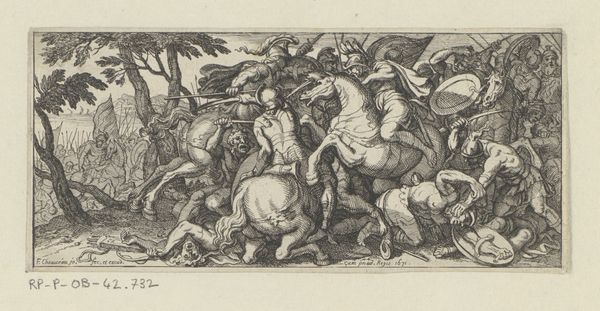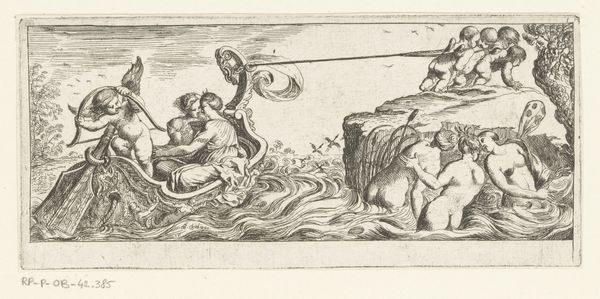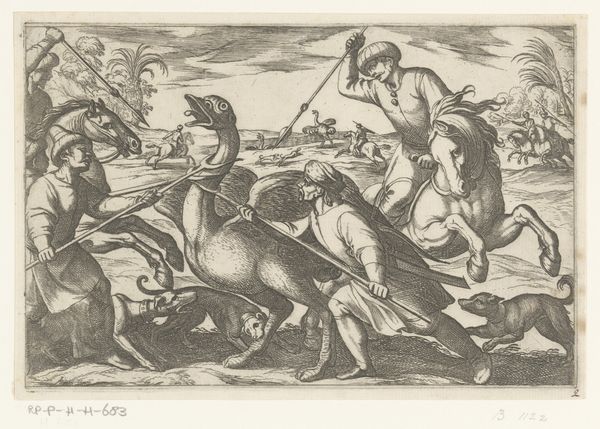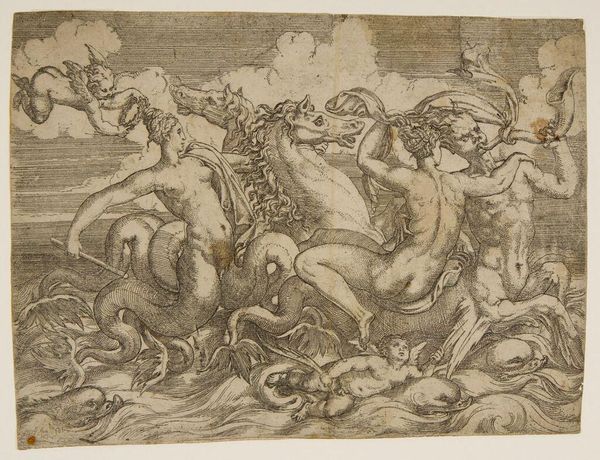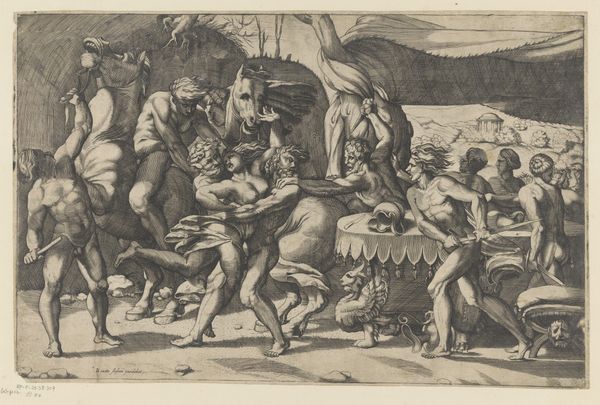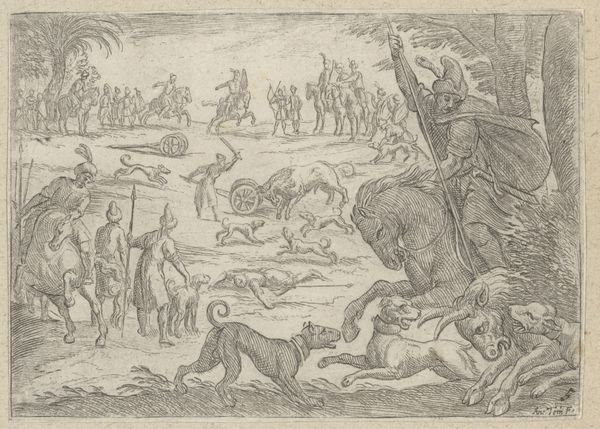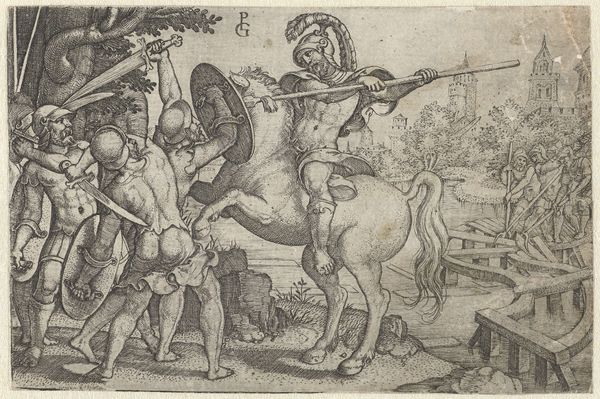
drawing, print, ink, engraving
#
drawing
#
ink drawing
#
narrative-art
#
pen drawing
# print
#
pen sketch
#
figuration
#
form
#
romanesque
#
ink
#
line
#
history-painting
#
engraving
Dimensions: height 92 mm, width 301 mm
Copyright: Rijks Museum: Open Domain
Curator: Here we have an ink drawing by Etienne Delaune titled, "Gevecht tussen Romeinse cavaleristen en infanteristen," placing its creation somewhere between 1528 and 1583. The work now resides in the collection of the Rijksmuseum. Editor: Immediately, the engraving's density strikes me. The interlocking figures and horses create a sense of claustrophobia and chaotic energy. What's your take on this riotous scene? Curator: I find Delaune's use of line particularly compelling. Note how he uses varying densities of hatching and cross-hatching to define the musculature of the figures and the texture of the horses' manes. It’s almost sculptural in its effect, given the limitations of the medium. Editor: Indeed. This linear style seems less about rendering realism and more about invoking an idea of classical heroism and military prowess. I'm struck by the repetition of specific iconographic elements: the crested helmets, shields, and rearing horses—symbols we've seen repeatedly used to signify power and authority throughout centuries of art. Does Delaune put his own twist on these established motifs? Curator: The figures definitely borrow from classical sculpture. Yet, I also detect a Mannerist sensibility in the elongated proportions and the rather theatrical poses. They underscore the highly artificial and constructed nature of the scene. There’s a stylization here that speaks volumes. Editor: You're right, this is less a depiction of an actual battle and more of an allegory about power, perhaps. The scene is timeless and ahistorical due to this effect. Curator: I’d agree. This wasn't meant to illustrate a specific battle so much as it aimed to evoke enduring principles, strength, courage, and conflict—ideals of its era expressed through the symbolic language of antiquity. Editor: Ultimately, I see a statement on human conflict. Its chaos is presented via highly formal, almost rhythmic arrangements. Curator: Yes, the drama plays out, shaped by a classical aesthetic order. Delaune reminds us of enduring human tensions through both form and narrative.
Comments
No comments
Be the first to comment and join the conversation on the ultimate creative platform.
